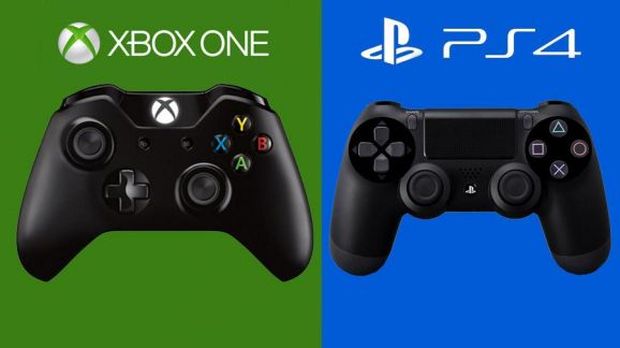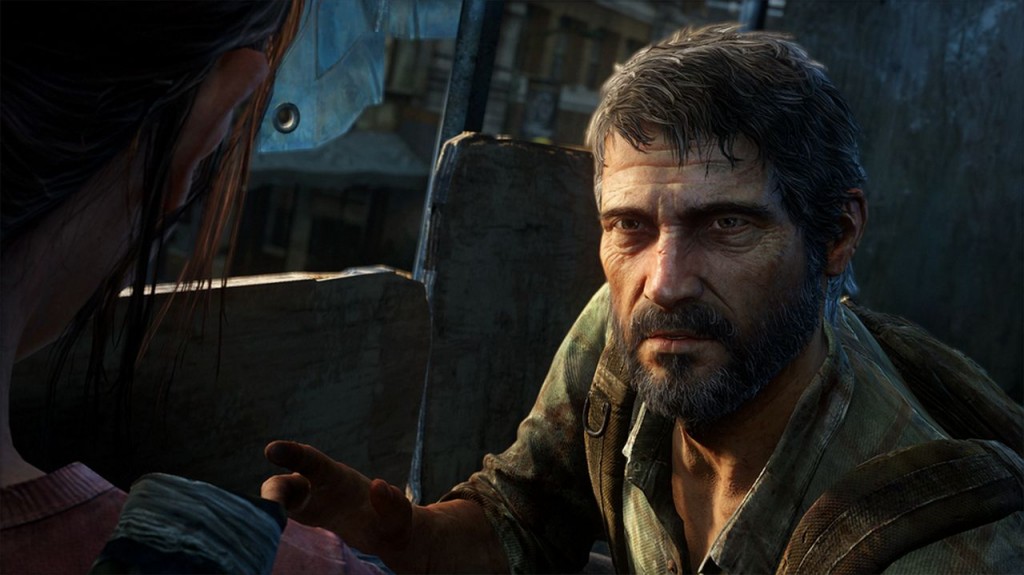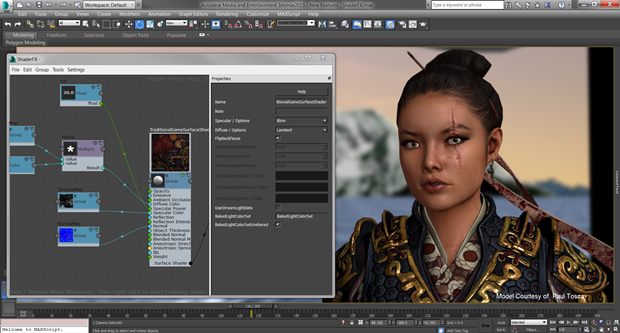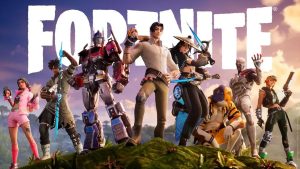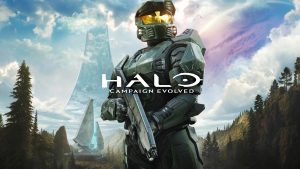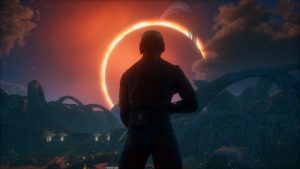
You probably have heard about Autodesk but if you haven’t, here is a bit of information about them. It’s one of the biggest software companies out there, providing software tools and middleware for architecture, engineering, and most importantly for video games. The complex animations that you see in AAA games like Killzone Shadow Fall have been implemented using Autodesk’s suite for middleware technologies.
GamingBolt spoke to Wesley Adams who is the Games Industry Marketing Specialist at Autodesk to know about the company’s latest offerings in video games middleware, cloud gaming and more.
Ravi Sinha: When people think “Autodesk” they often envision architectural design and engineering. But Autodesk has been a forerunner for development in games. Can you tell us about the various products Autodesk offers for development? Also, what are some upcoming games that will use Autodesk in their development?
Wesley Adams: We’re really proud of our lineup, because we believe that we offer tools for any kind of developer – whether you’re making the next blockbuster, AAA title or indie hit. Most people know our full toolbox of animation software for the creation of pretty amazing looking characters. Autodesk Maya and 3ds Max have been part of the creation process for games like Beyond: Two Souls and Thief.
Recently we introduced a product specifically for professional indie game makers called Maya LT. It has all of the right features for smaller studios, and is even available on a pay-as-you-go plan. It’s less than a year old, but we’re seeing some great developers really take to the tool. For example, Barking Mouse Studios used Maya LT to create their award-winning iOS title Lost Toys.
Our Gameware line also gives developers what they need to create the backbone of their games, such as Scaleform for engaging UI, like mini maps, HUDs and weapon wheels, and Autodesk Navigation to help design smart NPCs.
"The answer to the realism question goes far beyond just lighting. It isn’t really about the realism, but whether your tools can help you achieve your artistic vision. That being said, Beast does let artists bake physical-based global illumination data light maps, shadow maps, and point clouds."
Ravi Sinha: What is the current direction for next-gen development with Autodesk? Many developers have proclaimed the brilliance of the PS4’s unified memory architecture and criticized the Xbox One’s eSRAM. But how is Autodesk gearing its products up for the next wave of game development?
Wesley Adams: Since game development for new platforms always precedes the public announcement, Autodesk has been preparing its products for next-gen game development for some time.When the Xbox One and PS4 launched, our tools were ready to be compatible with the new systems. Increased power also means that developers will be pushing their games to the next level, and as tool providers, we strive to enable developers to be able to do what they want with their development pipelines by keeping the tools as flexible and extensible as possible. Our tools have been used in the creation of games likeRyse: Son of Rome and Killzone: Shadow Fall.
Ravi Sinha: How important will realistic lighting serve to become in the coming years? For that matter, what kind of lighting scenarios are potentially possible on next gen consoles with Beast?
Wesley Adams: The answer to the realism question goes far beyond just lighting. It isn’t really about the realism, but whether your tools can help you achieve your artistic vision. That being said, Beast does let artists bake physical-based global illumination data light maps, shadow maps, and point clouds. So, you can simulate realistic lighting with Beast without killing the performance of your game.
Next-gen is definitely pushing player expectations to the max for every graphical trick developers have, including lighting. In response, I expect to see certain developers strive towards hyperrealism, but I suspect that some developers will explore other ways of delivering graphically beautiful experiences to players as a way to differentiate themselves from the pack.
Ravi Sinha: We’ve heard before that some factors, like realistic facial animation, is pretty independent of the CPU clock speed of both next gen consoles. But what can you tell us about artificial intelligence, particularly that offered by Autodesk’s Gameware Navigation 2015? How does the increased power of the PS4 and Xbox One, along with PC, affect this and what does it make possible as compared to previous generation hardware?
Wesley Adams: Even before the Xbox One and PS4 arrived, we were seeing some impressive AI. Think about Ellie in The Last of Us. These companions weren’t a handicap and not only helped the player, but were really the basis for the emotional attachment to the game. With more power, I suspect we will see AI becoming more interactive and a larger part of the narrative; there is also a big trend towards larger game worlds filled with more independent background characters.In Navigation 2015, we introduced some features that will really help in these areas.
A new Hierarchical Pathfinding algorithm helps AI-controlled characters find good routes through super large levels,so they don’t suddenly veer off course unnaturally.On the animation side, Navigation supports animation-driven locomotion, so that AI entities can auto-correct their movement through the level; the AI system calculates a path, compares it to the animation library available, and auto-corrects if the computed path doesn’t fit available animations.
"The interesting trend in mobile is that devices are on a much faster evolutionary curve than traditional computers and consoles were. They are obviously building off decades of R&D, but it’s interesting that we see comparisons of mobile device power to the first space shuttle or even a last-gen gaming console. However, it’s not just about graphical power, but a reduced barrier of entry to publish games."
Ravi Sinha: Software seems to be flowing in an interesting direction with relation to hardware. While more powerful GPUs like the NVIDIA GTX Titan are being introduced, it’s still taking a while for most games to really warrant all that horsepower. What is your take on the situation?
Wesley Adams: It’s interesting to me that, in the past 10 years we’ve really started seeing more hardware that isn’t immediately outdated upon release. Compared to the early days of PC game development, where we struggled to even have scrolling game levels, it’s cool that we can grow into new hardware so that games feel nicer and newer, even as better technology is created.With every innovation it takes time for developers and artists to fully take advantage of all the new power. As software providers, one of our main goals is to try to anticipate developer needs.
A lot of the time, it comes down to making our tools flexible enough to be customized or integrated into in-house level editors or design tools. The AAA games being released today were started years ago, so when you see Eidos Montreal’s Thief pipeline built around 3ds Max or Guerrilla Games’ modifications to Maya for Killzone Shadow Fall, these developers were looking ahead at what they could do several years ago. So even if the hardware seems overpowered for a player today, a game developer is already stretching what is possible for something they won’t release for another 2-3 years.
Ravi Sinha: Speaking about mobile, how has Autodesk contributed to development in the mobile sector? With increased power of mobile CPUs, such as NVIDIA’s upcoming Tegra K1, what can be made possible in the coming year with Autodesk Gameware?
Wesley Adams: The interesting trend in mobile is that devices are on a much faster evolutionary curve than traditional computers and consoles were. They are obviously building off decades of R&D, but it’s interesting that we see comparisons of mobile device power to the first space shuttle or even a last-gen gaming console. However, it’s not just about graphical power, but a reduced barrier of entry to publish games.
I mentioned Maya LT earlier, but that’s only our latest push into the mobile and indie space. A few years back we also introduced the Scaleform Mobile SDKto provide a more accessible set of tools for building 2D games on mobile devices. It’s definitely something we’ve been keeping an eye on for a while. As hardware and software capabilities increase,future mobile and indie games will become more engagingwith deeper stories and better visuals. It’s important that we give huge power and graphical capacity to the crowd that needs it, while also improving accessibility and usability of our tools for new indie game makers.
Ravi Sinha: One of the biggest announcements from GDC 2014 was the announcement of Maya 2015. The latest iteration has some impressive features for modeling. Besides that, what is the one big feature that you think artists/developers appreciate the most?
Wesley Adams: For both Maya 2015 and Maya LT 2015, we introduced a couple of really important new tools. Geodesic Voxel Binding is a new skin binding method that produces really good results even if the mesh isn’t perfect, like overlaps, or isn’t watertight. We also integrated a completely new set of UV tools based on the Unfold3D technology. It can do UV unwraps of really complex geometry really quickly, and then it has several visual feedback systems to help the artist tweak and refine the UV map. Both of these changes aren’t what gamers typically think about when playing a game, but they are very important in the creation of game assets.
In Maya LT 2015 we also added integrations to Dropbox and Autodesk 360 cloud services, so you can open assets from those services from within the Maya LT UI, make modifications, and then export back to the cloud. We’re also excited about the ability to use consumer apps with Maya LT. Autodesk has a free app called 123D Catch that allows you to use your iPhone or iPad to take a real life object and turn it into a 3D model-all just using the camera on your device. For example, you could take a Catch of your pet, export it into the cloud or even Dropbox, and then import it into Maya LT as a game asset. If you’re just starting out, it’s a very easy and low-cost way to generate assets.
" I think that cloud-based gaming is almost certainly the future at this point. The tech world sort of swings back and forth between local computing and a “client” computing model, but I think we’re almost there for gaming, technologically."
Ravi Sinha: How do you think developers will take advantage of Maya on next gen consoles? Do you think with the combination of the latest iteration of Mayaand these next gen consoles, character modeling will go a level up?
Wesley Adams: Developers have already been taking advantage ofMaya and 3ds Max for next-gen work for quite a few years, now. Since AAA games take a long time to make, we’ve had customers working with previous versions of our software: customizing, tweaking, and building in-housetools for a while now. The 2015 releases of Maya and 3ds Max definitely bring some important updates to the table for AAA developers.
Much like with the last generation of consoles, I think we will see studios learning how to best leverage the new technology over the course of its life cycle, and graphics will keep improving, whether it’s from increased poly count or some other artistic technique. I think we’ll really see more photorealistic characters by the end of the cycle.
Ravi Sinha: Autodesk has had much support in AAA game development but what is the company’s stance on indie games and development, especially given the recent rise in popularity for the same? Have there been efforts to support indie developers as companies like Unity usually do?
Wesley Adams: We’re big believers in the indie market, which was a big reason behind the development of Maya LT. The product is really geared specifically for professional indie game makers. It starts with great, production-proven software, Maya, and then refines it to be very tailored to what indie developers need.
Since launch, we’ve listened to the community and added in features they said were needed, like a better workflow with Unity, MEL scripting, better UV tools, Dropbox and Autodesk 360 cloud integrations, an integration for using Substance Designer materials -and this is just the beginning!
Ravi Sinha: It’s often been said that the future of gaming will rest with Cloud computing with rumblings that this could be the last generation of physical consoles. What are your thoughts on the potential of Cloud computing at this point, especially with Microsoft’s Azure seemingly augmenting the console’s power while Sony’s PlayStation Now brings game streaming to the PS4?
Wesley Adams: I think that cloud-based gaming is almost certainly the future at this point. The tech world sort of swings back and forth between local computing and a “client” computing model, but I think we’re almost there for gaming, technologically. One thing to consider is broadband availability in certain parts of the world. It will come down to a business decision for hardware manufacturers as to how they will still capture the non-broadband market with products that require a continuously high-speed connection.
I’m guessing that as this generation starts to age, even high speed mobile devices will have propagated enough to serve as hot spots for people with no landlines. On our side, Autodesk has already made some neat inroads to putting tools on the cloud, in web browsers on Amazon servers with the help of OTOY. We also have Autodesk 360, which you can use to store files in the cloud and share them more easily with your team. So the cloud is coming, both on the player side and the development side. I’m pretty stoked about it.
Ravi Sinha: There are plenty of next gen engines like Unreal Engine 4, REDEngine 3, id Tech 5 and much more dominating headlines. How will Autodesk take advantage of these engines, and in your opinion, which offers the best possible range of features for development?
Wesley Adams: You know, this question comes up a lot, and it’s always tough to answer whether one technology is better than another for AAA development. The main reason is that you need to assess your creative team and see what they are comfortable using. If they can make a great game with tool “A” instead of tool “B”, then why switch if it causes a new learning curve? One our side, Autodesk is trying to make the tools flexible enough so that people can use whatever engine or complementary tools they want. So we offer scripting, APIs and SDKs to let people customize as much or as little as needed to get their game made.
On the indie game maker side, we’ve recently added a feature called “Send to Unity” that, as its name implies, lets you export assets from Maya LT directly to a Unity project folder. This is kind of unique in the indie space, since pipelines aren’t really as complex or customized as in AAA. Indies also don’t necessarily have a “tools guy” who creates custom tools all day, so if we can make little things like easier, it’s a big deal for indie developers.








